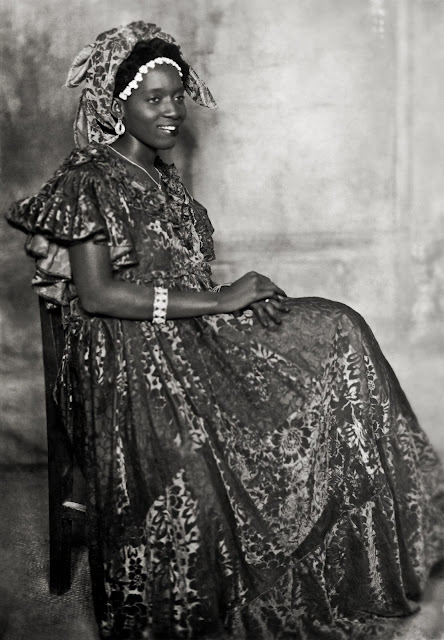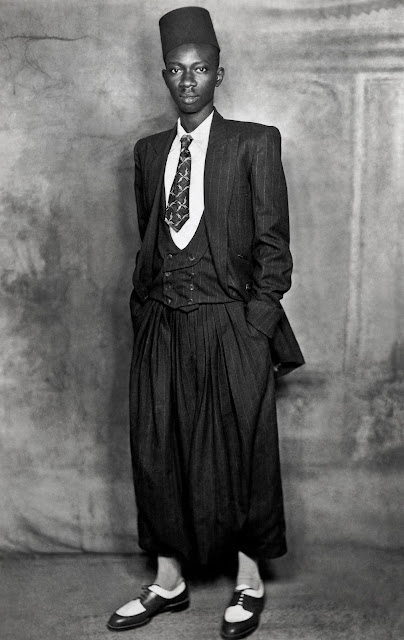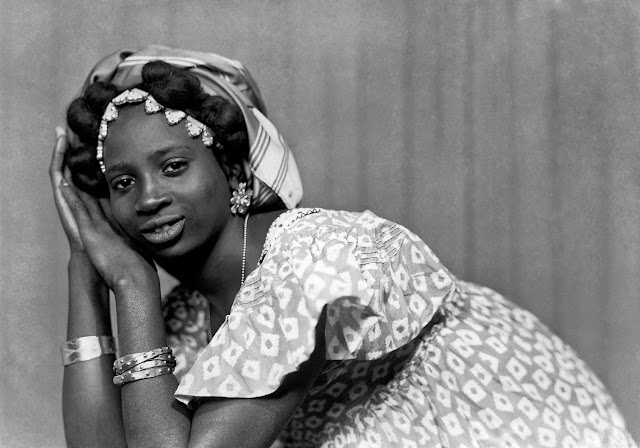Mama Casset was born in Saint-Louis, Senegal in 1908 and moved to Dakar with his family 10 years later. He was introduced to professional photography at an early age, finding employment with the Photographic Shop of French West Africa shortly after finishing his primary education by 12.
In 1925, his traveling zeal led him out of the city and into the French Air Force, where, for two decades, he practiced aerial photography and journeyed extensively across the French West African colonies. Casset also found himself photographing various foreign dignitaries and royalty, including the King of Morocco, Mohamed V. In 1943, he left the Air Force and returned to Dakar. He would be based in Dakar for the rest of his life, though he continued to travel during his middle years, returning to North Africa and venturing further east into Lebanon and Saudi Arabia.
Studio photography, which mostly consisted of family and individual portraits, had increased in popularity among the local population since its introduction at the beginning of the century. A burgeoning African middle-class, a taste for self-portraits introduced by Europeans, and an increase in African photographers contributed to this new productive era of portraiture. The demand for Senegalese photographers got another boost in 1960, when the majority of European photographers returned home after Senegal won her independence. Mama Casset, who set up shop at the beginning of this flourishing genre, was poised to become one of its figureheads.
In stark contrast to the European perspective, which valued the African as a strange figure in an alien landscape, Casset turned the focus onto himself, who was intrinsically valuable. Casset used plain curtains as the backdrop for many of his photos, removing the notion of an ‘exotic’ setting. His tightly framed portraits, with the subject proudly filling the frame, further contribute to this effect.
Despite the plain setting, Casset did not suppress themes of African heritage and tradition. Instead, he encouraged his subjects to display the clothing and styles of their own culture. Rich regional fabrics and traditional hairstyles frequently appear in his work, taken at a time when many of the rising upper classes were emulating the ‘colonial-style’ Western dress as modeled by the French.
However, it is perhaps Casset’s unique compositional style that led later commentators to deem him a pioneering figure of artistic significance rather than a mere commercial success. Casset would often encourage his subjects to strike unusual, less serious poses. Elegant women can be seen lounging horizontally, with the camera drifting about the studio, taking shots from various perspectives. Subjects are regularly smiling or even pouting. His photos don’t illustrate a struggling African populace in need of a pitying gaze, nor are they of an otherworldly, exotic realm of strange and fascinating customs. Instead they showcase a vibrant and proud middle-class responsible for their own identity and appearance.
Unfortunately, Casset’s later years were plagued by misfortune and ill health. He began to develop blindness in the early 1980s, a condition he attributed to his frequent exposure to magnesium flash bulbs in his youth. By 1983 he was forced to give up photography for good. In 1984, a fire at his laboratory destroyed the bulk of his portfolio, resulting in the scarcity of his work today – only a few hundred photos remain in the possession of his family members.
Mama Casset died in 1992.
(via The Culture Trips)























0 comments:
Post a Comment